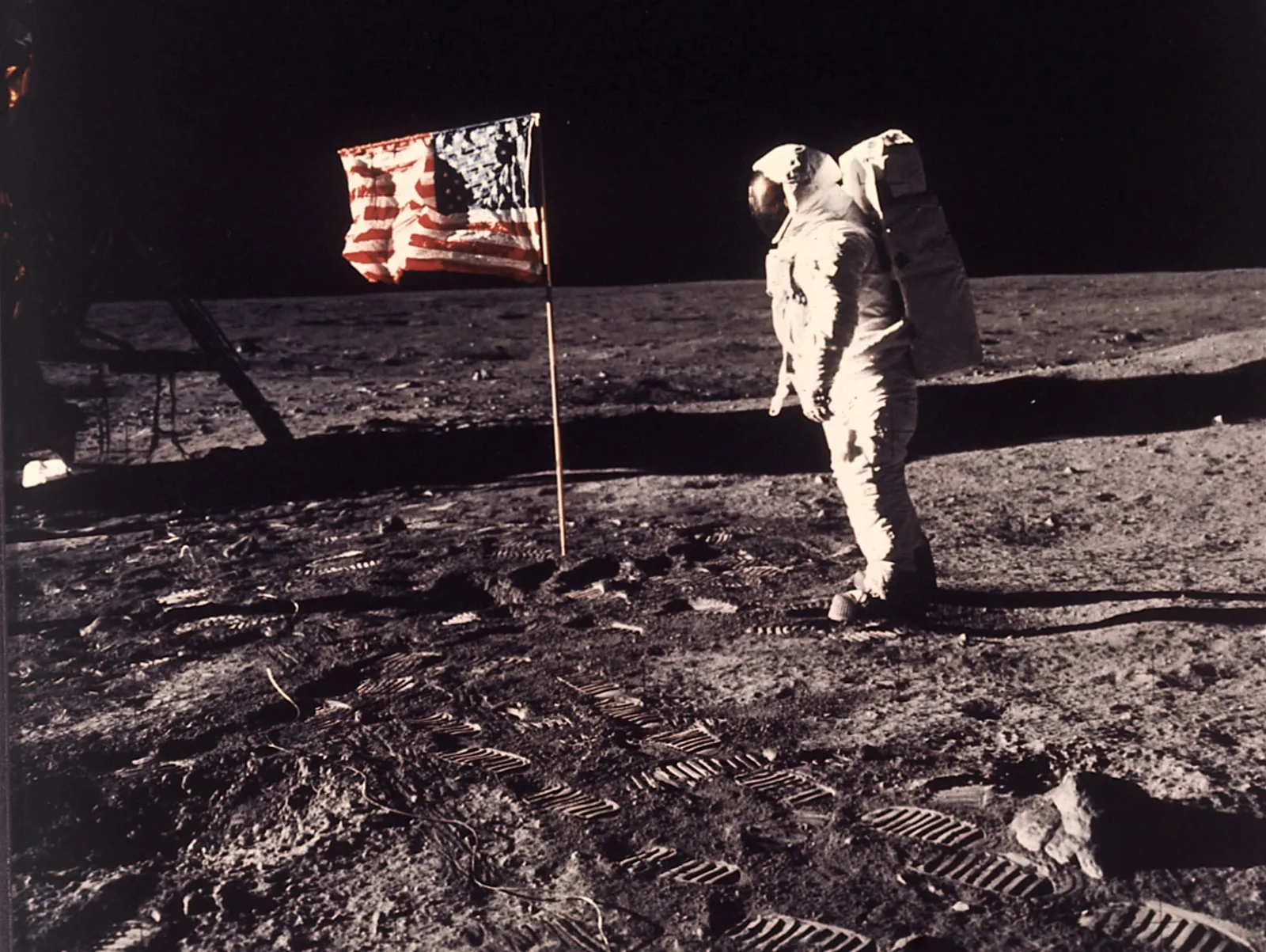On July 16, 1969, the world watched with bated breath as a colossal Saturn V rocket roared to life, carrying the hopes and dreams of a nation. This wasn’t just another launch; this was Apollo 11, the first human mission to attempt a lunar landing. Aboard the spacecraft were three brave astronauts – Neil Armstrong, Michael Collins, and Buzz Aldrin – embarking on a historic journey that would forever change the course of human exploration.
The Apollo 11 mission was the culmination of President John F. Kennedy’s ambitious challenge, issued in 1961, to land a man on the Moon “before this decade is out.” It was a daring goal, a race against time and the Soviet Union in the height of the Cold War. The Apollo program, a monumental undertaking involving thousands of engineers, scientists, and support personnel, became a national focus, a testament to human ingenuity and perseverance.
The Apollo 11 spacecraft consisted of three modules: the Command Module (CM), nicknamed Columbia, which housed the astronauts throughout the mission; the Service Module (SM), providing propulsion and essential systems; and the Lunar Module (LM), nicknamed Eagle, designed to land on the Moon’s surface.
After a thunderous launch that shook the ground for miles around, Apollo 11 entered Earth’s orbit. Over the next three days, the spacecraft journeyed towards the Moon, with Armstrong, Collins, and Aldrin meticulously monitoring systems and preparing for the critical lunar landing.
On July 19th, Apollo 11 slipped behind the Moon, losing contact with Earth for a tense period. This was when the astronauts separated the Lunar Module from the Command Module. Armstrong and Aldrin piloted the Eagle towards the lunar surface, while Collins remained aboard Columbia in lunar orbit, ready to rendezvous if necessary.
The landing was fraught with peril. The landing site, dubbed Tranquility Base, was a relatively flat area, but with craters and boulders posing a significant threat. The Lunar Module’s descent was automated, but with Armstrong taking manual control during the final, precarious moments to avoid a cratered area. Fuel warnings blared as the Eagle found a relatively smooth patch of lunar soil, settling down with just seconds of fuel remaining.
On July 20, 1969, at 02:56 UTC, Neil Armstrong became the first human to set foot on another celestial body. His iconic words, “That’s one small step for a man, one giant leap for mankind,” echoed around the world, a monumental achievement witnessed by an estimated 650 million people. Shortly after, Buzz Aldrin joined him on the lunar surface.
For over two hours, Armstrong and Aldrin explored the lunar surface, collecting moon rocks, planting the American flag, and setting up scientific instruments. Their every move was captured by cameras, providing humanity with its first close-up look at the Moon’s desolate landscape.
The success of the lunar landing wasn’t guaranteed. The astronauts faced numerous challenges, including a malfunctioning computer and limited fuel reserves. Yet, their skill, training, and unwavering determination ensured a safe return to the Lunar Module.
After a successful rendezvous with Columbia, the astronauts embarked on their return journey to Earth. The entire mission lasted eight days, three hours, and eighteen minutes, culminating in a splashdown in the Pacific Ocean on July 24th.
The Apollo 11 mission marked a turning point in human history. It demonstrated the power of human ambition and collaboration, pushing the boundaries of scientific and technological advancement. It instilled a sense of wonder and possibility, inspiring generations to reach for the stars. The legacy of Apollo 11 lives on, serving as a reminder of what we can achieve when we set our sights on the seemingly impossible.pen_sparktunesharemore_vert












What do you think?
It is nice to know your opinion. Leave a comment.